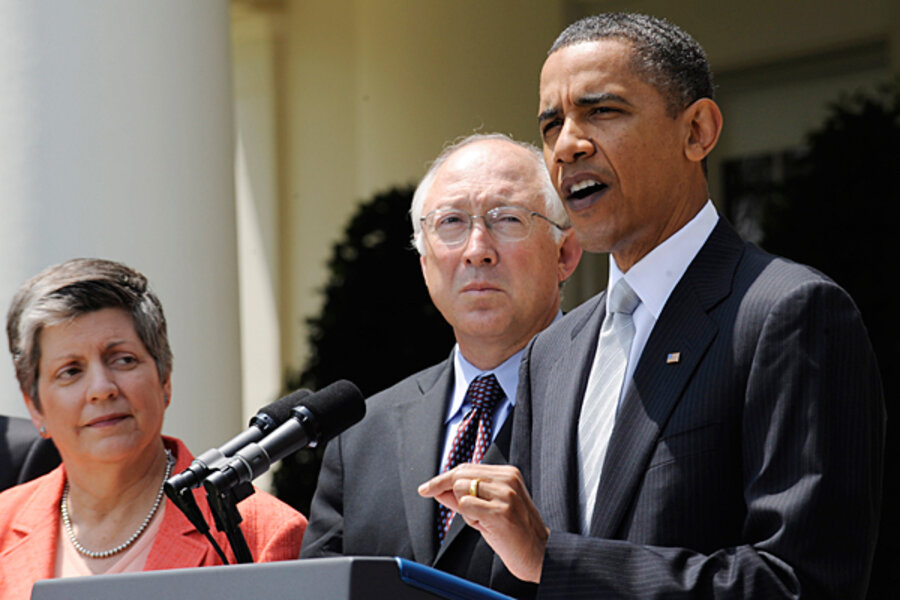As Obama scolds BP, debate brews over how much oil is leaking
Loading...
As crude oil pours into the Gulf of Mexico from a drill-rig blowout nearly a mile beneath the sea surface, the frustration at the slow pace of mitigation efforts is palpable – from the president of the United States to marine scientists trying to gauge the true scope of the problem and its likely short and long-term effects.
The spill and efforts to deal with it "in some sense is one big experiment," says Arthur Mariano, an oceanographer at the University of Miami in Coral Gables, Fla.
Up to now, no one has had to deal with a spill this large at this depth – some 5,000 feet below the surface. The blow-out occurred April 20, its explosion and fire killing 11 workers and sinking the Deepwater Horizon, the drilling platform for an exploratory well some 40 miles off the Louisiana coast.
IN PICTURES: Louisiana oil spill
Moreover, the complexities of the ocean environment the oil is entering make efforts to project the plume's spread difficult, Dr. Mariano says. And the broader effects of using hundreds of thousands of gallons of chemical dispersants – some of which are being applied deep undersea at the wellhead – are unclear.
President Obama vented his frustration Friday during a statement to the press he issued from the White House Rose Garden.
Flanked by cabinet members and other administration officials overseeing the federal response to the blow-out, he lit into industry representatives who appeared at congressional hearings on the spill earlier this week.
"I did not appreciate what I consider to be a ridiculous spectacle during congressional hearings into this matter," he said. "You had executives of BP and Transocean and Halliburton falling over each other to point the finger of blame at somebody else."
Nor did federal regulators escape the tongue-lashing. The president criticized what he termed "a cozy relationship" between oil companies and federal regulators in which "permits were too often issued based on little more than assurances of safety from oil companies" and oil companies exploited loopholes that "allowed some oil companies to bypass some critical environmental reviews," Obama said.
Part of the challenge – and the frustration – in coping with the blow-out lies in determining just how much oil the submarine gusher is releasing.
Official estimates from the federal government and BP, which owns the oil lease the Deepwater Horizon was working, place the leak rate at some 5,000 barrels (210,000 gallons) of oil a day. That alone is has been enough to trigger a regional emergency response.
But independent experts say the leak rate is likely to be much larger.
A week ago, Florida State University marine scientist Ian McDonald put the leak rate at around 25,000 barrels a day.
And in a report Friday morning, National Public Radio cited estimates from three independent scientists who say at least 50,000 barrels of oil a day are flowing into the Gulf waters. That would imply that the Deepwater Horizon disaster could be releasing at least the equivalent of one Exxon Valdez spill every five days.
These estimates have wide margins of error, cautions Timothy Crone, a scientist at Columbia University's Lamont-Doherty Earth Observatory in Palisades, N.Y.
In an email exchange, Dr. Crone, one of the three scientists NPR contacted, noted that his approach honed on estimating the material spewing from deep-sea hydrothermal vents.
He says that videos of the blow-out taken by robotic cameras at the well head lack the detail needed for more precise estimates of the flow. Moreover, the material emerging from the well head is a mix of methane, mud, and oil.
Taking all that into account, he puts the flow rate at roughly 50,000 barrels of oil a day.
"My numbers should be viewed with caution," he warns, but adds, "the flows are almost certainly higher than 5,000 barrels a day."
Related:





